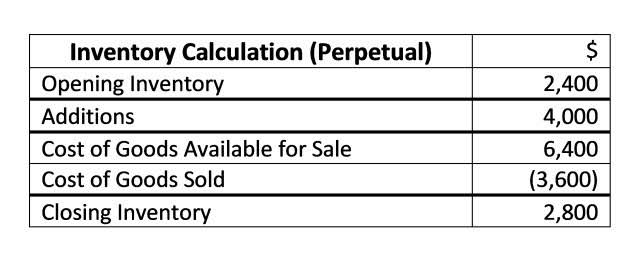R Squared Definition, Formula & How to Calculate

For instance, a strongly skewed distribution might suggest using median rather than mean for central tendency, or indicate the need for data transformation before applying certain statistical tests. High variance in your data might point toward using robust statistical methods, while the presence of outliers could influence your choice of correlation measures. These insights form the groundwork for more complex analyses and help guide decisions about which advanced statistical methods may be most appropriate for further investigation.
Table for Example of Calculation of Correlation Coefficient
R-squared in regression is a statistical measure that quantifies the proportion of the variance in the dependent variable that is predictable from the independent variable(s). In the context of a regression model, it provides a numerical indicator of how well the model fits the observed data. The adjusted R2 can be negative, and its value will always be less than or equal to that of R2. Unlike R2, the adjusted R2 increases only when the increase in R2 (due to the inclusion of a new explanatory variable) is more than one would expect to see by chance. Statology Study is the ultimate online statistics study guide that helps you study and practice all of the core concepts taught in any elementary statistics course and makes your life so much easier as a student. In general, the larger the R-squared value of a regression model the better the explanatory variables are able to predict the value of the response variable.

How to Find the Correlation Coefficient from R2
- Most often, we can encounter it in machine learning and biology/medicine-related data.
- This means that 72.37% of the variation in the exam scores can be explained by the number of hours studied and the number of prep exams taken.
- It considers all the independent variables to calculate the coefficient of determination for a dependent variable.
- Due to the lengthy calculations, it is best to calculate r with the use of a calculator or statistical software.
- The R-squared coefficient represents the proportion of variation in the dependent variable (y) that is accounted for by the regression line, compared to the variation explained by the mean of y.
To determine if a correlation coefficient is statistically significant, you can calculate the corresponding t-score and p-value. The Matthews correlation (abbreviated as MCC, also known as Pearson phi) measures the quality of binary classifications. Most often, we can encounter it in machine learning and biology/medicine-related data. Kendall tau correlation coefficient is sensitive monotonic income summary relationship between the variables. Due to the lengthy calculations, it is best to calculate r with the use of a calculator or statistical software.
Additional Resources

When we consider the performance of a model, a lower error represents a better performance. When the model becomes more complex, the variance will increase whereas the square of bias will decrease, and these two metrices add up to be the total error. Combining these two trends, the bias-variance tradeoff describes a relationship between the performance of the model and its complexity, which is shown as a u-shape curve on the right. For the adjusted R2 specifically, the model complexity (i.e. number of parameters) affects the R2 and the term / frac and thereby captures their attributes in the overall performance of the model. The methods of correlation analysis allow you to measure both the strength and direction of relationships between variables.
As squared correlation coefficient

A high R2 indicates a lower bias error because the model can better explain the change of Y with predictors. For this reason, we make fewer (erroneous) assumptions, and this results in a lower bias error. Based on bias-variance tradeoff, a higher complexity will lead to a decrease in bias and a better performance (below the optimal line). In R2, the term (1 − R2) will be lower with high complexity and resulting in a higher R2, consistently indicating a better performance. Values of R2 outside the range 0 to 1 occur when the model fits the data worse than the worst possible least-squares predictor (equivalent to a horizontal hyperplane at a height equal to the mean of the observed data).
Join the Statology Community
- High variance in your data might point toward using robust statistical methods, while the presence of outliers could influence your choice of correlation measures.
- These two trends construct a reverse u-shape relationship between model complexity and R2, which is in consistent with the u-shape trend of model complexity versus overall performance.
- The correlation coefficient of regression can identify how in-line your slope is to the value is to the correlation, and is a great metric for regressive target prediction.
- Coefficient of determination helps use to identify how closely the two variables are related to each other when plotted on a regression line.
- Through descriptive statistics, analysts can identify typical values, examine variability, and detect unusual patterns in their data.
- Its value depends upon the significance of independent variables and may be negative if the value of the R-square is very near to zero.
One of the most common is wondering how well a straight line approximates the data. To help answer this, there is a descriptive statistic called the correlation coefficient. In a parallel connection, the voltage remains at 24V, but the capacity (amp-hours) is doubled. For example, a battery system https://www.bookstime.com/industries with two 24V 100Ah batteries in parallel would have a total capacity of 200Ah. Since the system now has double the capacity, the charging time will also increase proportionally. To charge the battery fully, we first calculate its capacity in watt-hours (Wh), which is a measure of its total energy storage capacity.

Can R Squared Value Be Negative Or Zero?
This occurs when a wrong model was chosen, or nonsensical constraints were applied by mistake. If equation 1 of Kvålseth12 is used (this is the equation used most often), R2 can be less than zero. By calculating statistics within groups, analysts can uncover meaningful variations and trends specific to different segments of their data. This granular analysis provides a more complete understanding of the underlying patterns and relationships, leading to more informed interpretations and conclusions. To calculate the coefficient of determination from above data we need to calculate ∑x, ∑y, ∑(xy), ∑x2, ∑y2, (∑x)2, (∑y)2.

We will begin by listing the steps for the calculation of the correlation coefficient. The data we are working with are paired data, each pair of which will be denoted by (xi,yi). Charging a 24V battery with a solar panel is a bit more complex and requires extra caution. To make it safer and easier, let’s break down the steps for properly charging a 24V battery using a solar r&d tax credit panel. Always ensure that the battery’s positive terminal is connected to the charger’s positive lead, and the negative terminal to the negative lead.

